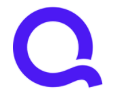Using funds to pay new debt on credit cards
I'm a long time YNAB user that is starting to use Simplifi and I'm trying to find if there is a way to know what you have available to pay for your newly acquired debt. I use different cards to accumulate perks during the month. I'd like to say that I spend to what I bring in but sometimes that is not the case. I cannot pay 3K in new charges when I only have 2K that came into my banking and can be used for payments. Is there a tracking system that shows how much you put onto a CC that month along with how much of that was actually funded with income?
EX: AMEX → 3000 new charged, 2500 allotted for all of those new charges in bills/subscriptions/planned spending. I want to make sure I pay the 2500 to the CC as I have those funds in the bank allotted for whatever planned spending categories were funded. Is there a place in Simplifi that says, as it says in YNAB, Payment 2500, Overspending (month) 500.
Is there an alternative way to know what you can pay without overdrawing your accounts?
Thank you.
Comments
-
Hello @tazelahy,
Thanks for reaching out! We would not be sure of another third-party program's features and how they work, but you can track planned spending in Quicken Simplifi via the Planned Spending tab in the Spending Plan section. We have a support article available here that goes over Planned Spending and how it works:
I hope this helps,
Coach Jon
-Coach Jon
0 -
@tazelahy the short answer is no. QSimplifi is set up quite differently from Y***. As @Coach Jon points out, the Spending Plan is where you set up your.. well, Spending Plan. If you have done all the work spelled out in the 4 Y*** rules and you Spending Plans includes all your monthly expected income and fixed expenses (monthly bills, subscriptions, savings) in the Income after bills and savings section and you have set up Spending goals or limits for your monthly flexible expenses in Planned Spending, QSimplifi will tell you what you have available for thet extra Spending, if anything, to cover that "over spending" on your credit card.
QS will keep track of how much you are spending but does not do the work of moving the funds from your expense category to your credit card category. QS does track which account you pay an expense out of, whether a cash account or credit card account, but you will have to make sure you don't spend cash that is meant.to cover an expense paid with your credit card.
Read through the article linked above and come on back with your questions.
Danny
Simplifi user since 01/22
”Budget: a mathematical confirmation of your suspicions.” ~A.A. Latimer2 -
Thank you, @Coach Jon and @DannyB. I'll do some more research. I appreciate your feedback!
0 -
Is it better to set the funds for a bill that occurs every 3, 6, 12 months as Planned Spending with rollover or as a Goal? I would like to think that the Planned Spending would be the better option as those bills are still recurring and need to be funded every X months where it seems a goal is a one and done shot. I notice that the funds that come out of Bills does not directly tie to Planned Spending so if I'm understanding the application correctly, I should be able to setup a Planned Spending group for something and fund it monthly, filling the bucket to the desired bill amount the month before it's due, and when it comes time to pay a bill, pay it but make sure that bill is marked to exclude from the spending plan as to make sure it does not affect my Income after bills & savings and adjust the Planned Spending group to Change Rollover Amount to release funds for that bill that is paid.
Sounds like a lot of hoops but I think that will work, again, if I understand the application correctly. If this is the case, it's not a big deal to me as Y*** seems to have issues with goals set that reoccur where they need to start to re-fund again.
Thanks again.
"I'm learnding!" ~Ralph Wiggum
0 -
@tazelahy
The rollover feature was just recently added to QS. When it became available, I set up my non-monthly recurring expenses both fixed and flexible as Planned Spending expenses with rollover enabled. As long as you DO NOT set any of these expenses up as recurring bills/subscriptions, when paid QS will expense them against your Planned Spending category. If you use a Savings Goal to save for these expenses then you would need to exclude them when paid.You are right to think of Saving Goals as best used for one and done.
Danny
Simplifi user since 01/22
”Budget: a mathematical confirmation of your suspicions.” ~A.A. Latimer1 -
@DannyB On that thought, not using a recurring item as a bill or subscription, has anyone suggested that QS implement a general reminder for transactions? The reminder can be used for just the occasion of recurring items that fall under Panned Spending and could also be helpful when it comes time to use funds from a Goal.
I really appreciate your communication/feedback.
Thank you!
0 -
I guess I can get by using some sort of general reminder app for now. 👍
1 -
I'm not aware of this idea being put forward as a feature request in this forum. I have most of these non-monthly expenses set up for auto pay plus my vendors are very good and sending me reminders when a renewal date is coming up. Also, at this point I've been paying for most of my non-monthly recurring expenses for so many years that I have a fairly good idea of when each one is coming due.
In the real world, I have a monthly amount I set aside to cover the total of all these expenses that all lands in a specific high yield savings account via a monthly auto transfer. For the most part I can pay directly out of this savings account to cover a bill, or I can set up a transfer from this savings account to the credit card to cover any expenses paid by credit card.
There are a lot of differences between your former app and QS. A couple of key differences are:
- QS is very "this month" focused. The Spending Plan is for the current month and does not concern itself with next month or the month after. Yes, you can scroll forward through the next 12 consecutive months, but each of those month's Spending Plans are specific to each particular month. Yes, QS does now have a roll over feature for Planned Spending, but this is a very recent addition and was seemingly finally added as a result of a lot of pressure from a very rambunctious group of Mint refugees that came on board as Mint shut down.
- QS does not "force" the user to "'give every dollar a job." QS instead gives the user a running "Available to spend" balance for the month after all known and expected expenses and savings are accounted for. This Available is theoretically your monthly surplus. You can spend this money any way you want including using it to pay down any "overspending" on a credit card up to what is available.
- Along the same line as #2, the QS Spending Plan very much "allows" you to budget money you do not possess at the beginning of the month. The Spending Plan is a tool you use to plan out how you intend to spend your monthly recurring anticipated income.
- In your former app, you had the option to allow funds to accumulated in your expense categories and those funds remained available month to month for those categories as you added to them when income became available to assign. The Available (which becomes "left at end of month" at the end of each month) in QS is specific to each month and as QS is currently configured that Available/left at end of month goes away between the last day of one month and the first day of the new month. In essence, you start each new month with a clean slate. The exception to this in QS is any rollover funds set up in Planned Spending which are now carried forward to follow on months.
A successful transition from any other personal finance app to QS will be greatly enhanced by learning how QS works and not trying to impose the system used by other apps. While there are certain cross overs, QS is simply different and will provide a solid tool for managing your personal finances.
Danny
Simplifi user since 01/22
”Budget: a mathematical confirmation of your suspicions.” ~A.A. Latimer2

